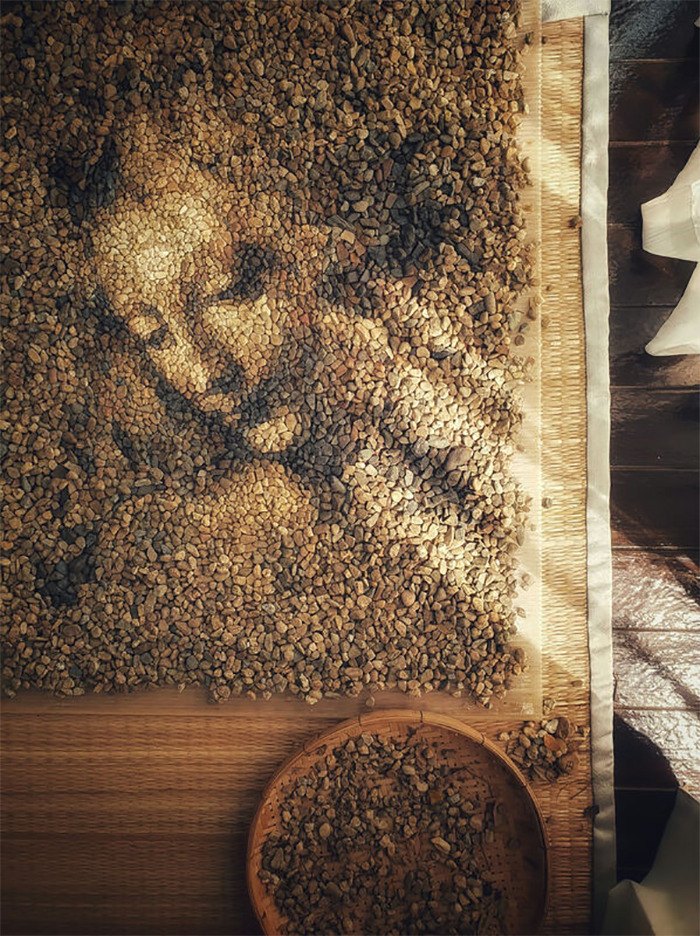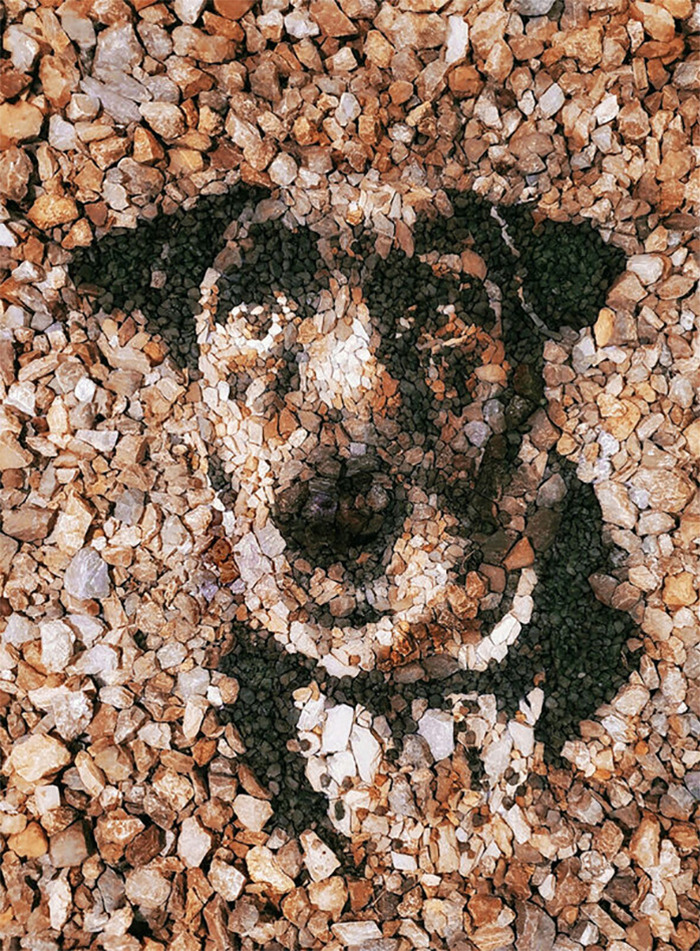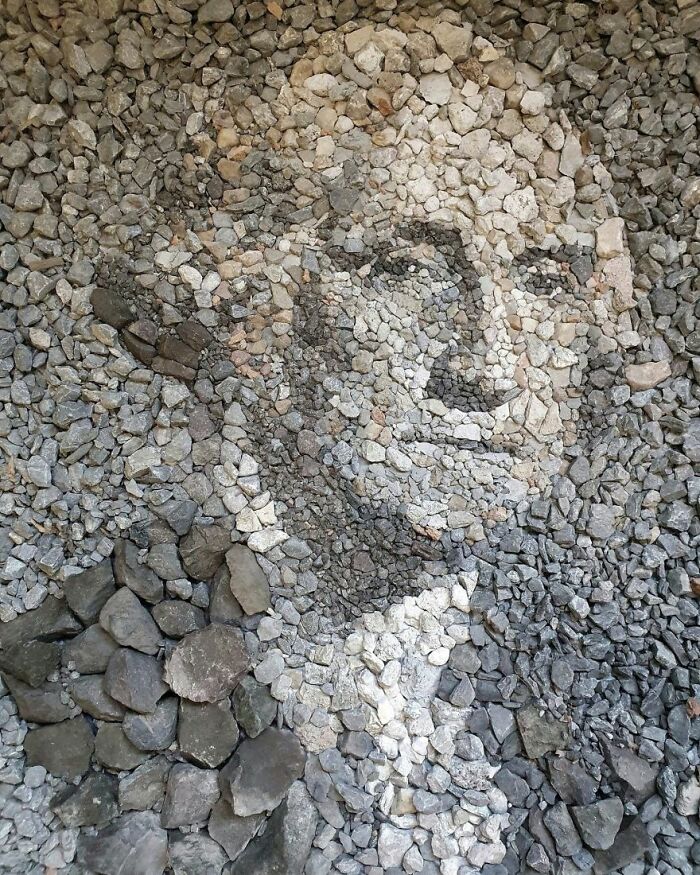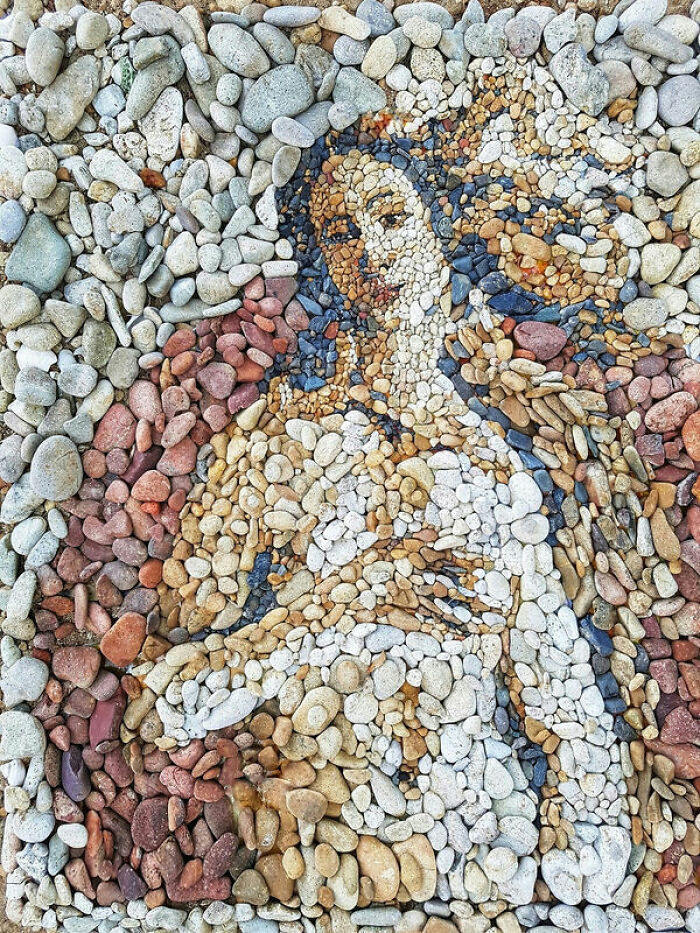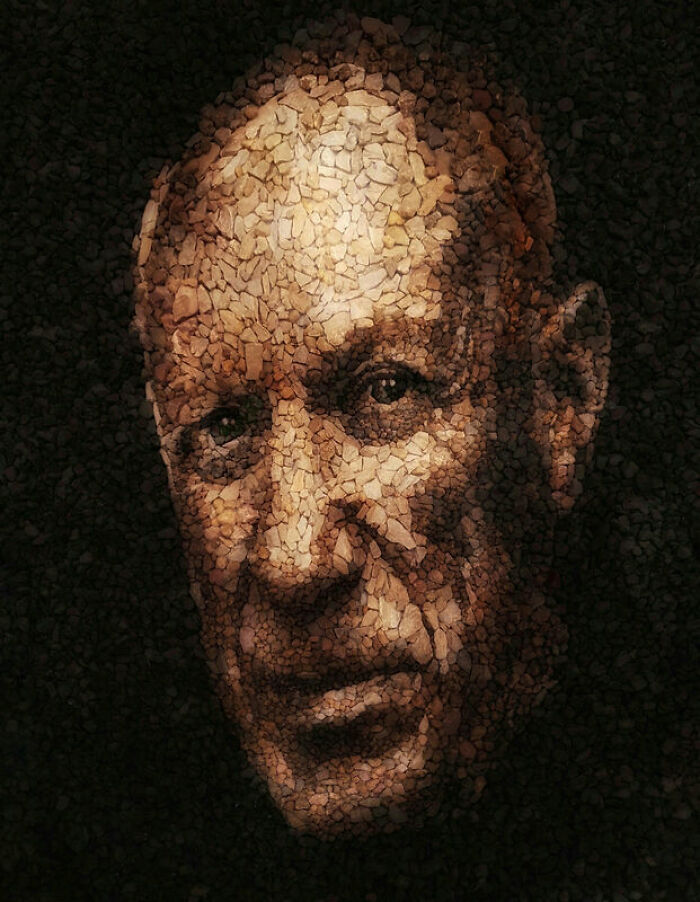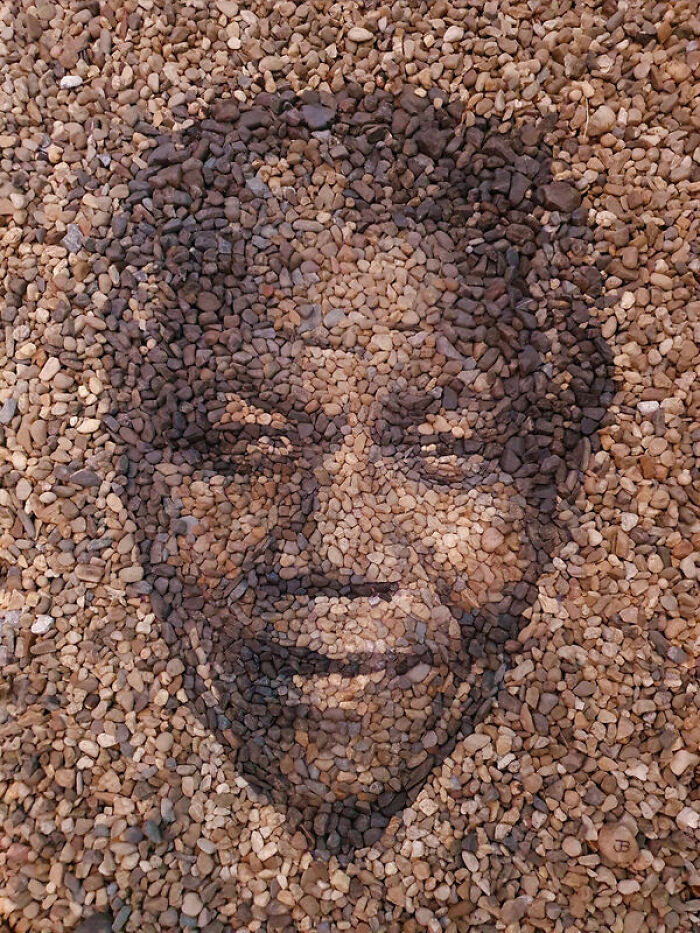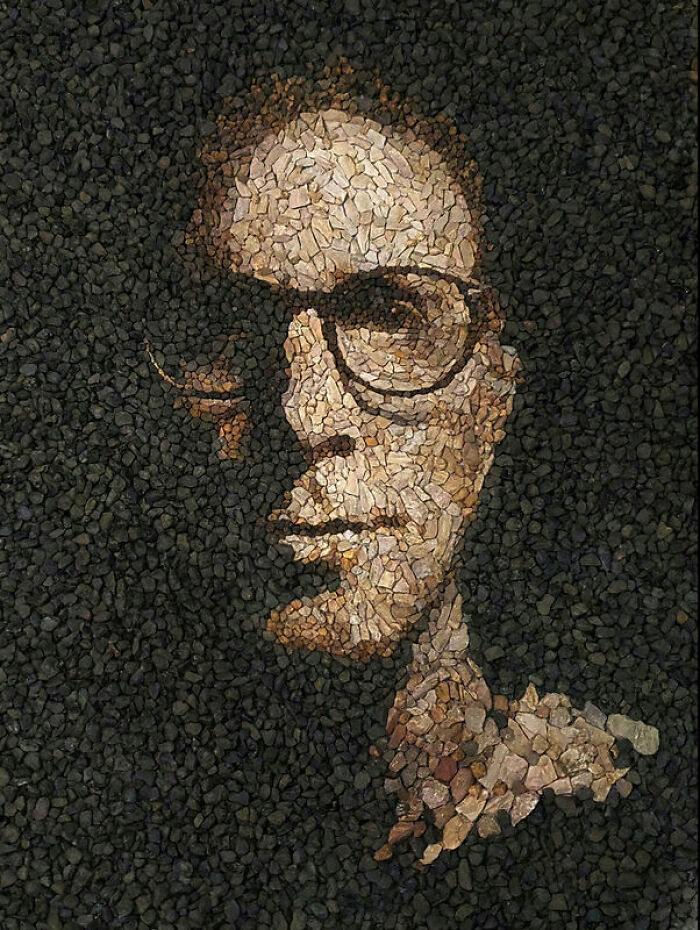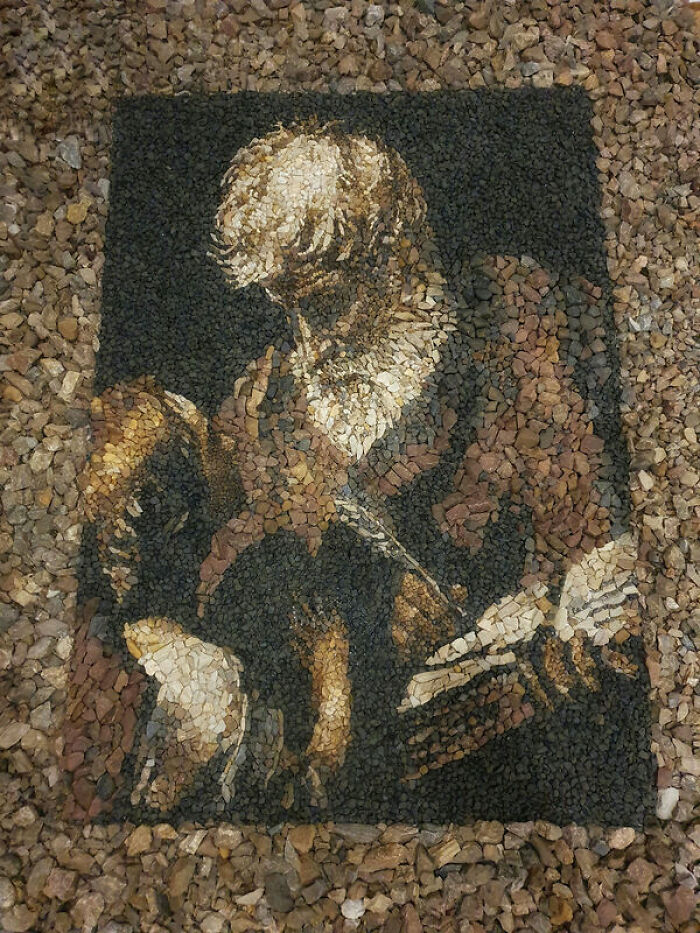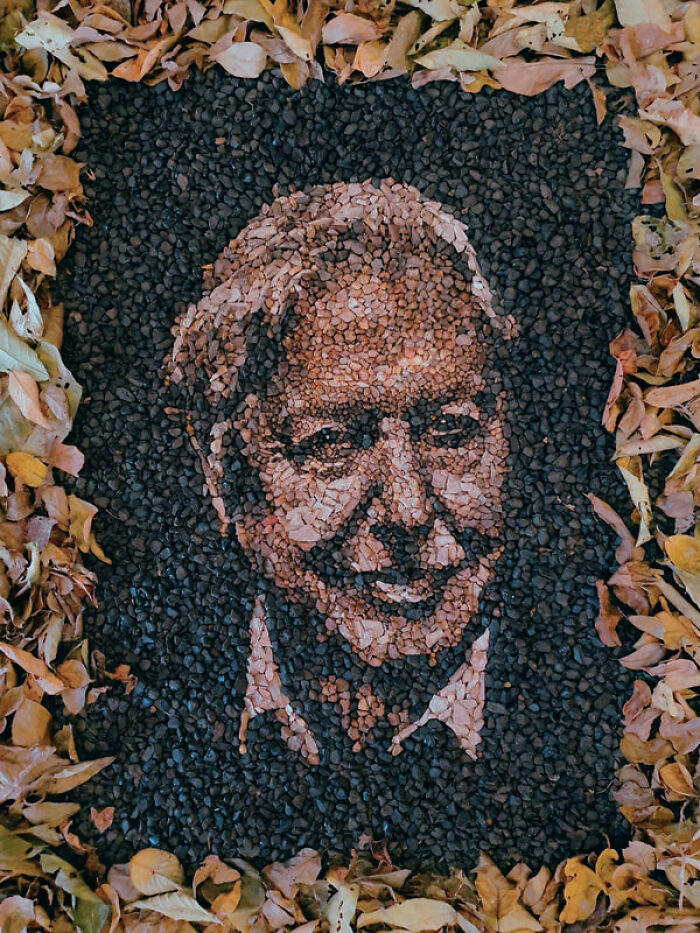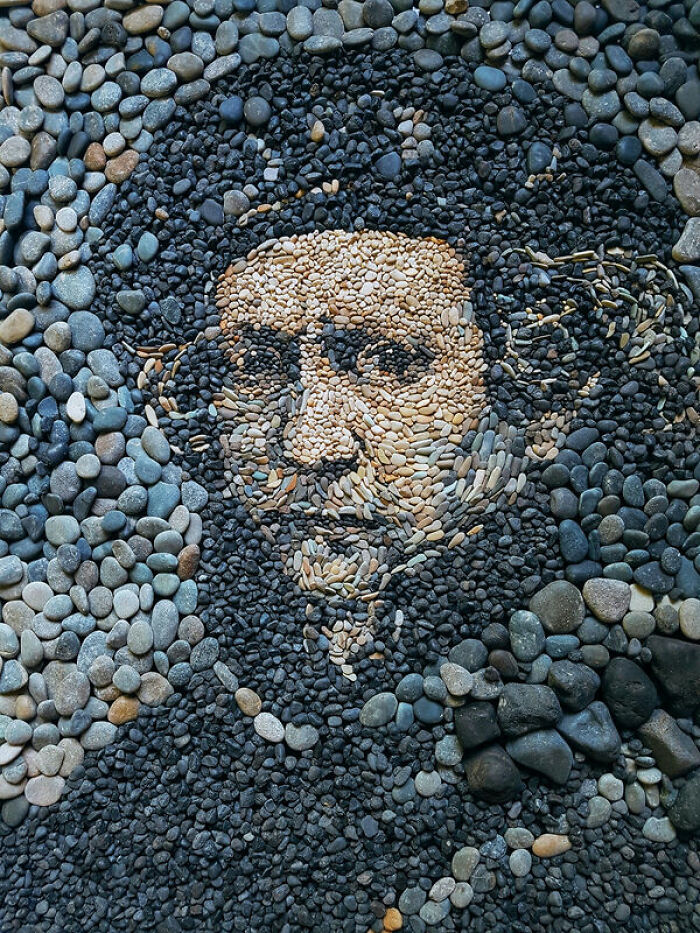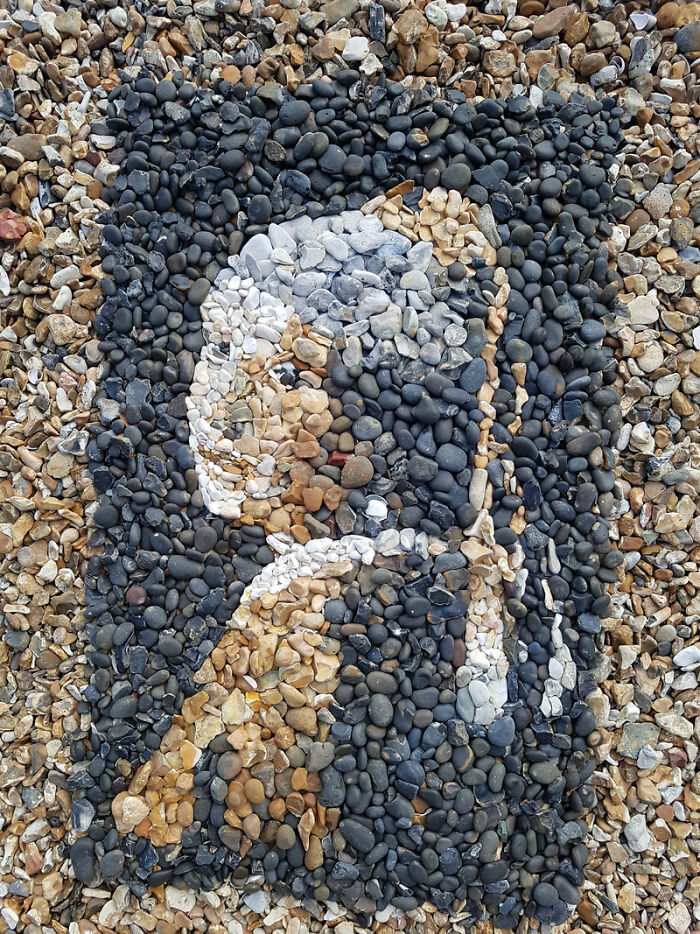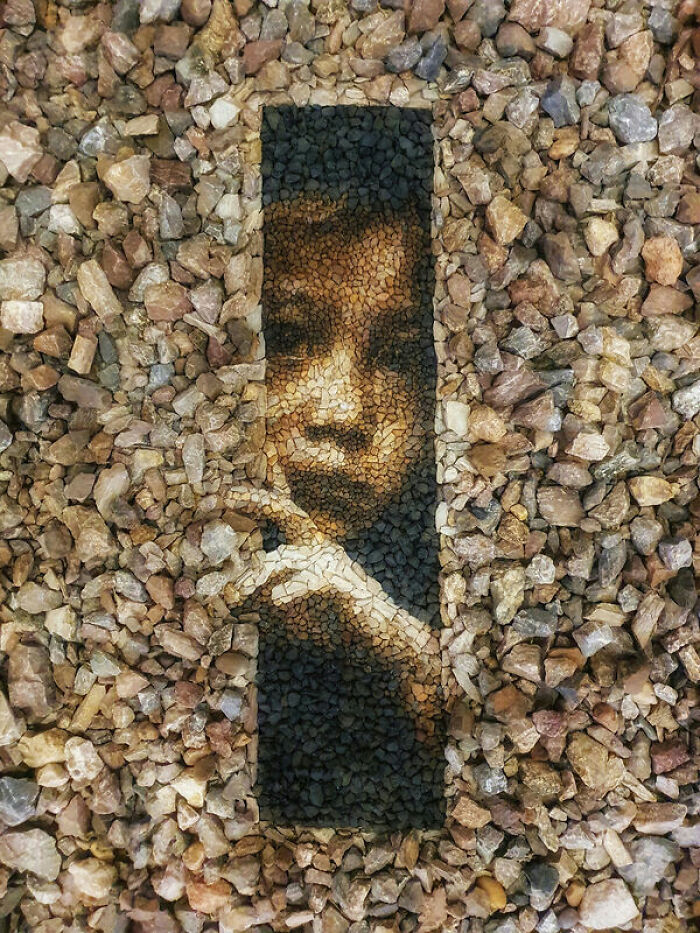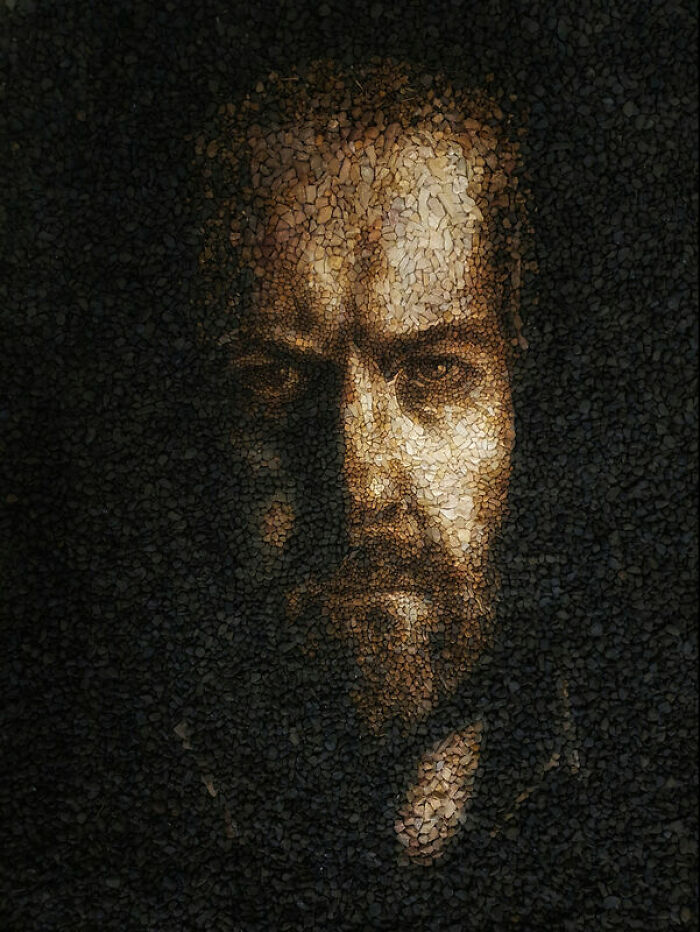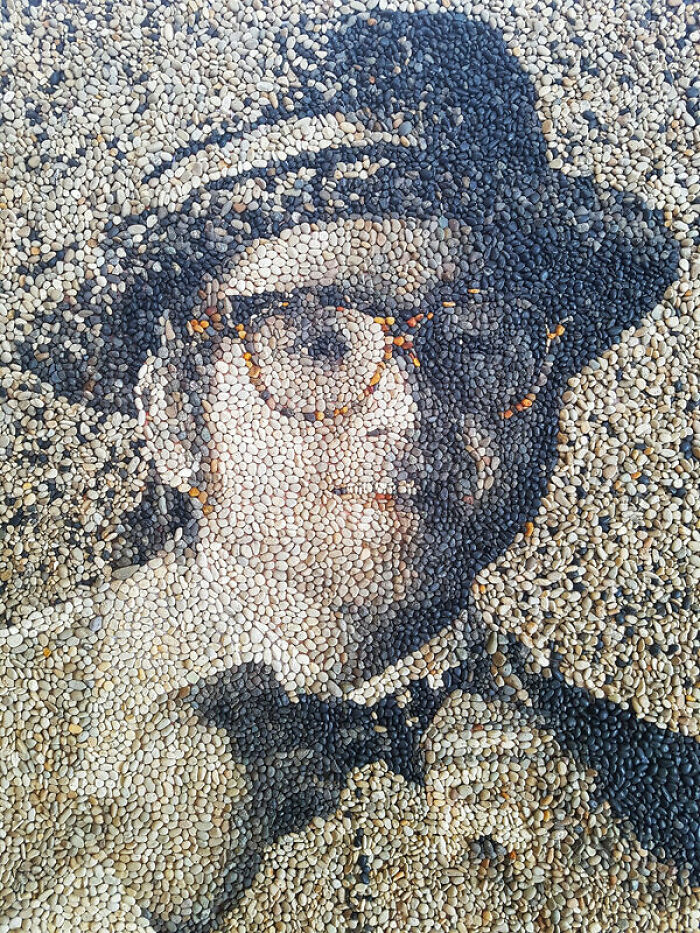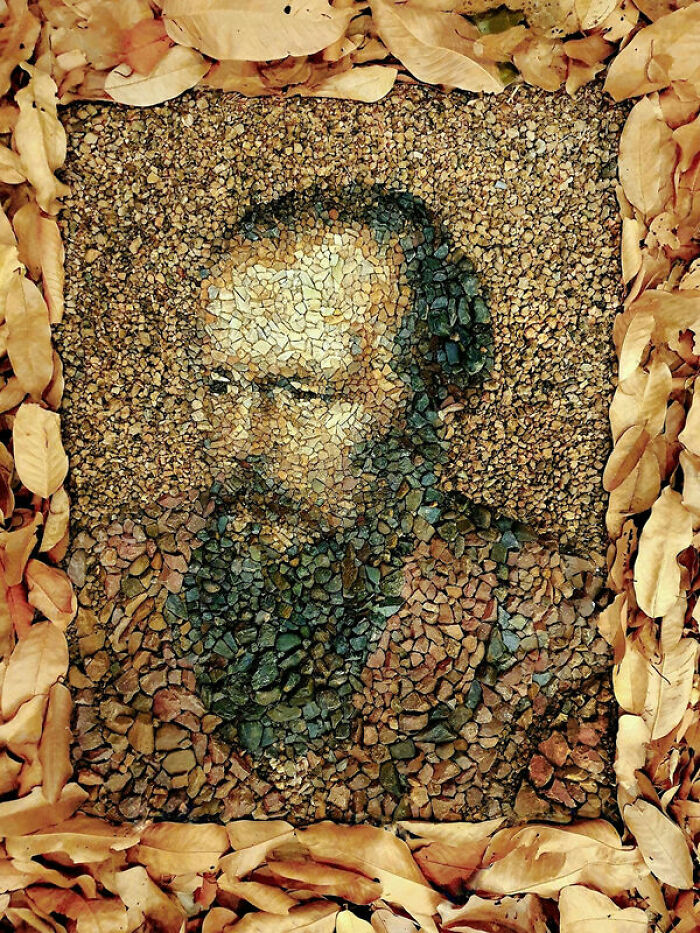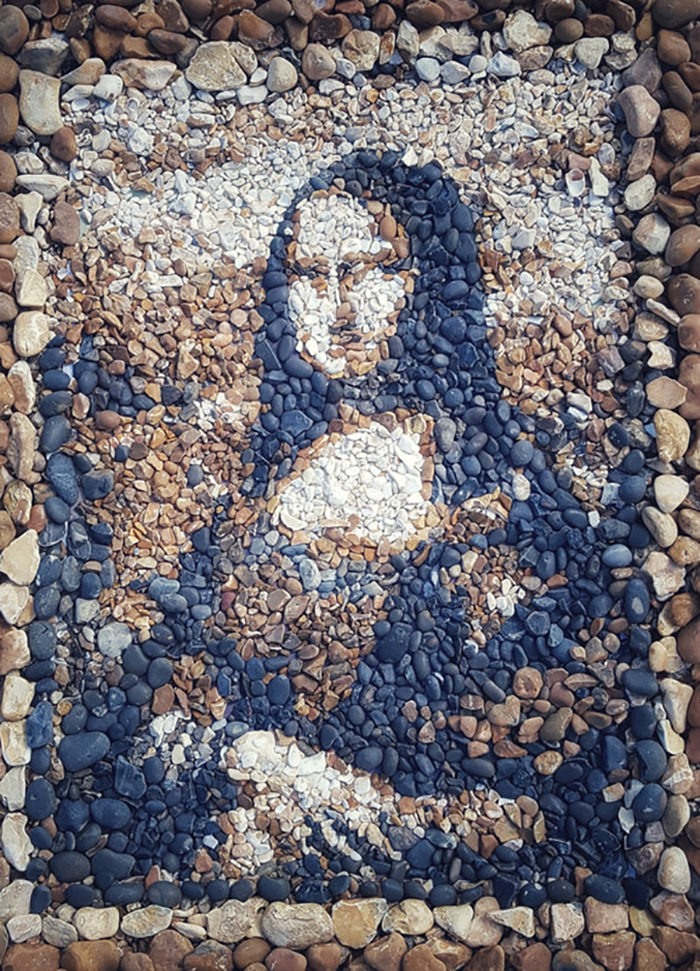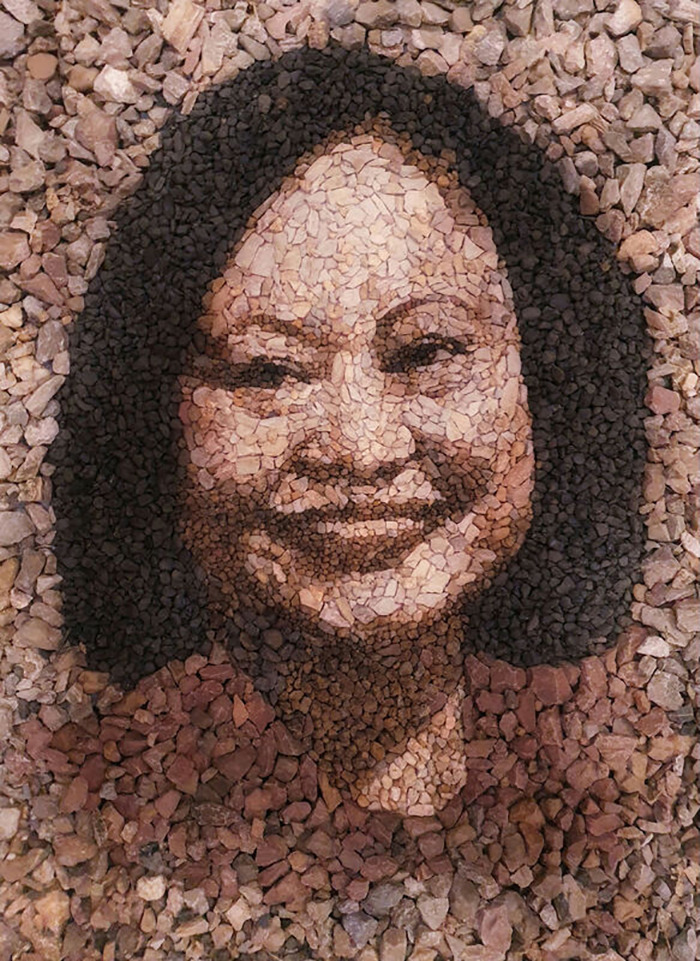British Artist Justin Bateman Creates Intricate Art Using Pebbles
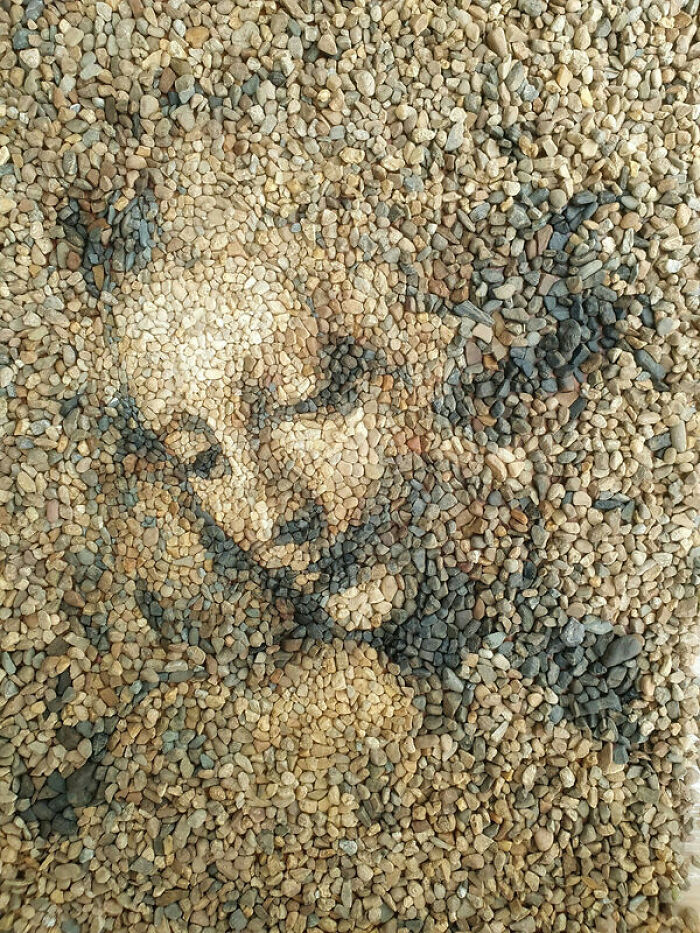
Art can be created from all kinds of things like food and everyday objects. This British artist named Justin Bateman, however, uses fragments of nature to create his masterpieces.
Specifically pebbles, rocks, and stones. He creates temporary mosaics of people’s portraits, animals, famous paintings, and statues. The artist calls it ‘land art.’ Justin enjoys this type of art because it’s temporary and unmovable. It’s much more valuable this way.
More: Justin Bateman h/t: boredpanda
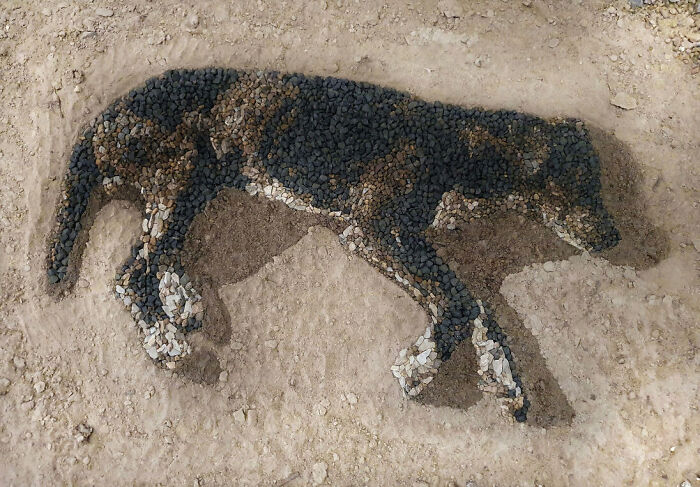
“The first creations were in Portsmouth, the UK on the beach. It was an old workshop I ran with my students as an art lecturer, but my friend and I decided we would have a go at the project ourselves. I was only visiting England for a few months and soon I returned to Bali, Indonesia,” Justin told Bored Panda.
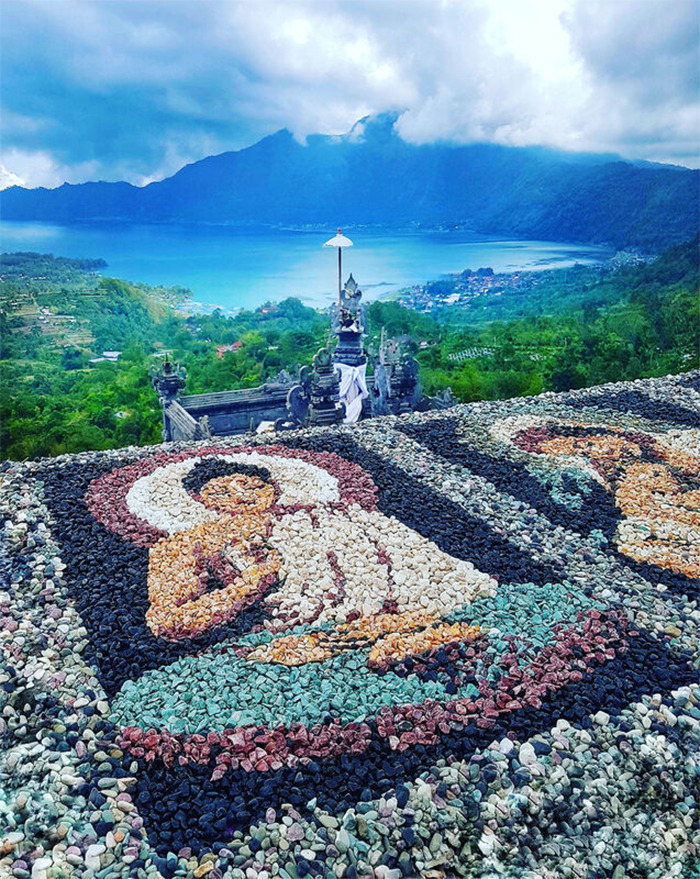
“In Indonesia I continued to improve my process, working very long hours, often through the night with a night lamp. My Airbnb hosted by Ketut was by the river, so I could listen to the frogs sing and river flow whilst making work. Now I live in Chiang Mai, Thailand and the people here are wonderful.”
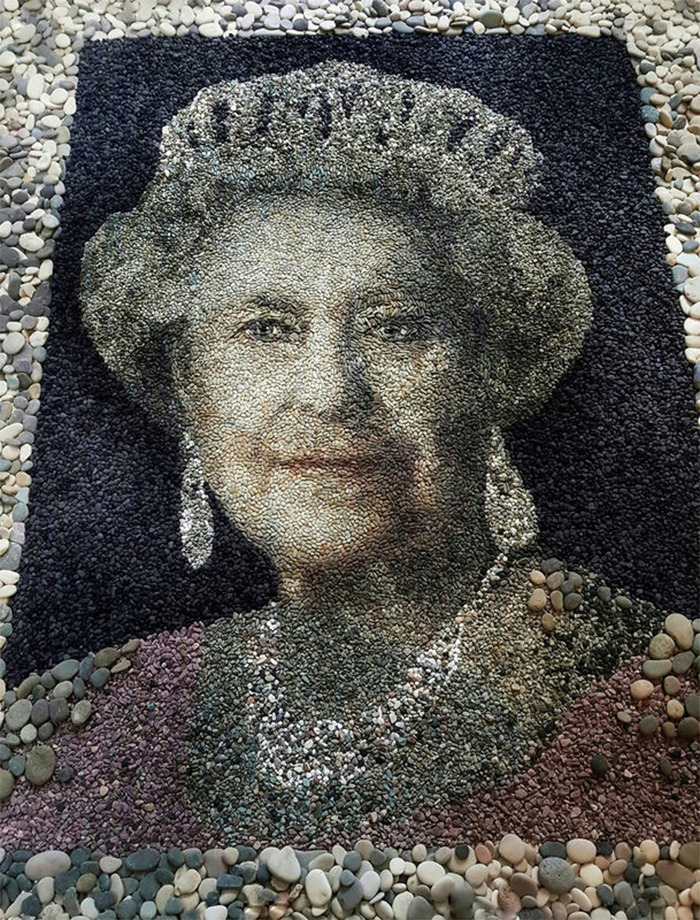
“At first it was hard to destroy the work when I had spent so many hours creating it. But the impermanence aspect of the site-specific work is important to me. I can make permanent pieces, but most of the work is not meant to last. It is ephemeral, like the seasons. I prefer the natural environment to remain natural, so I remove any indication of my presence when I leave the site and disperse the stones.”
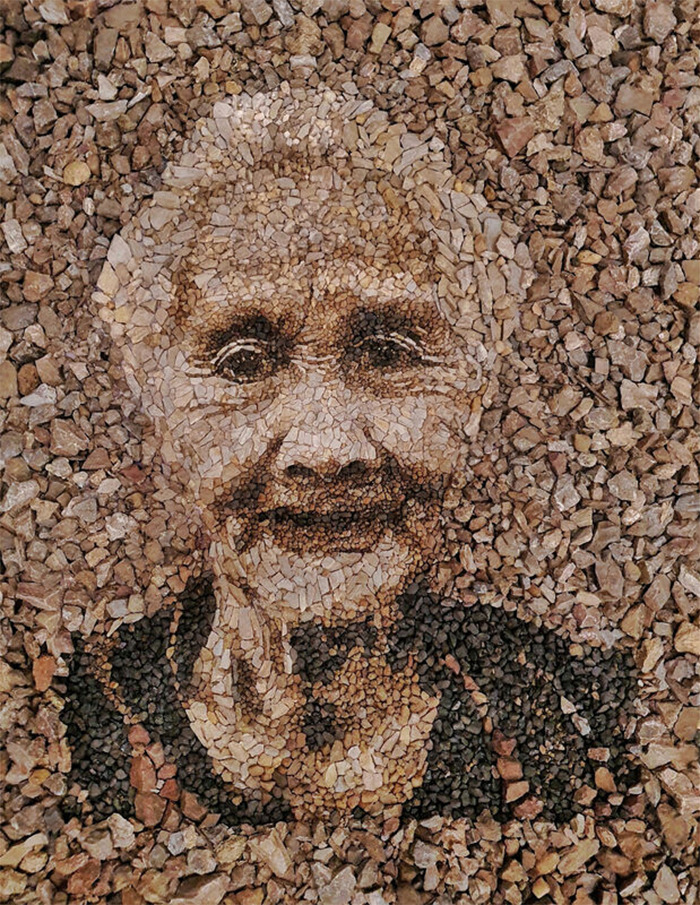
“Now it is second nature. It would seem odd to keep my artwork! I work in forests, on beaches and even in car parks! In Bangkok, I used a railway line, where there was an abundance of stones. I thoroughly enjoy each stage of the process, finding pebbles, planning the subject, locating the environment, making the art, photographing the outcome, and responding to my audience.”
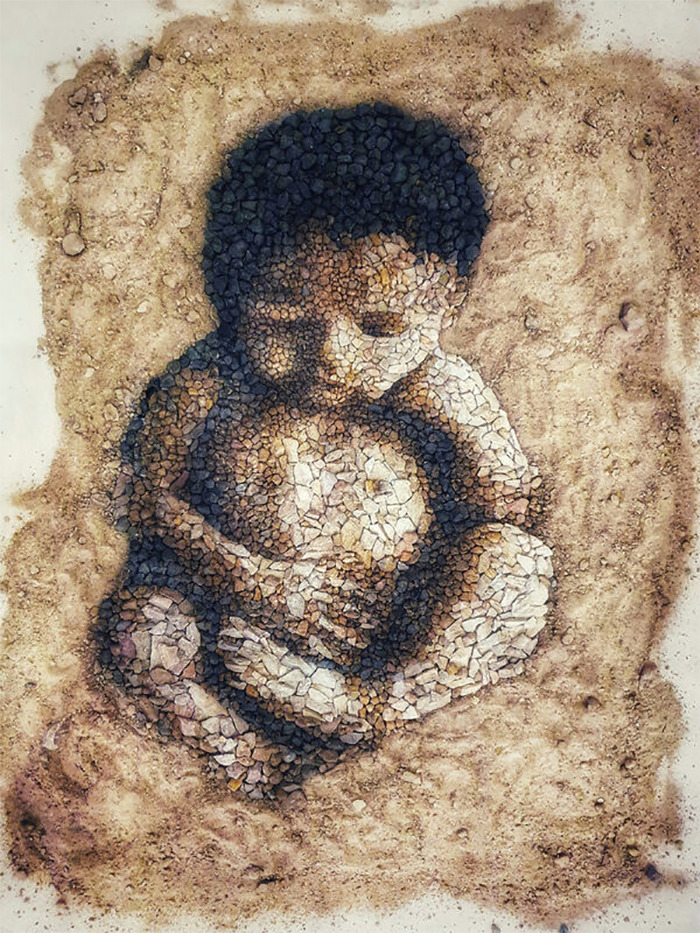
“It can be a lonely pursuit. I have been very lucky to have the support of wonderful friends and family whilst exploring Asia and making new work. My work’s scale ranges from 1m² to 10m², can take between a few days and a few weeks, and requires absolute focus to complete. Sometimes it is like a meditation, at other times it can feel stressful! It depends on how well the stones are behaving, haha.”
